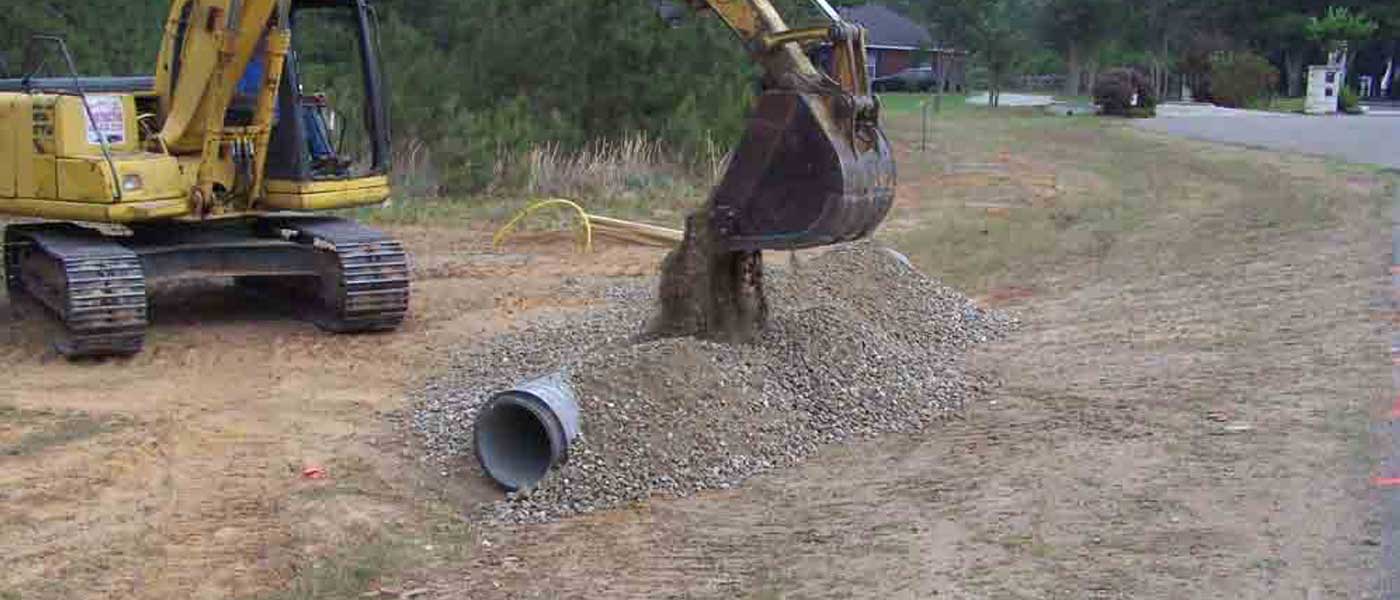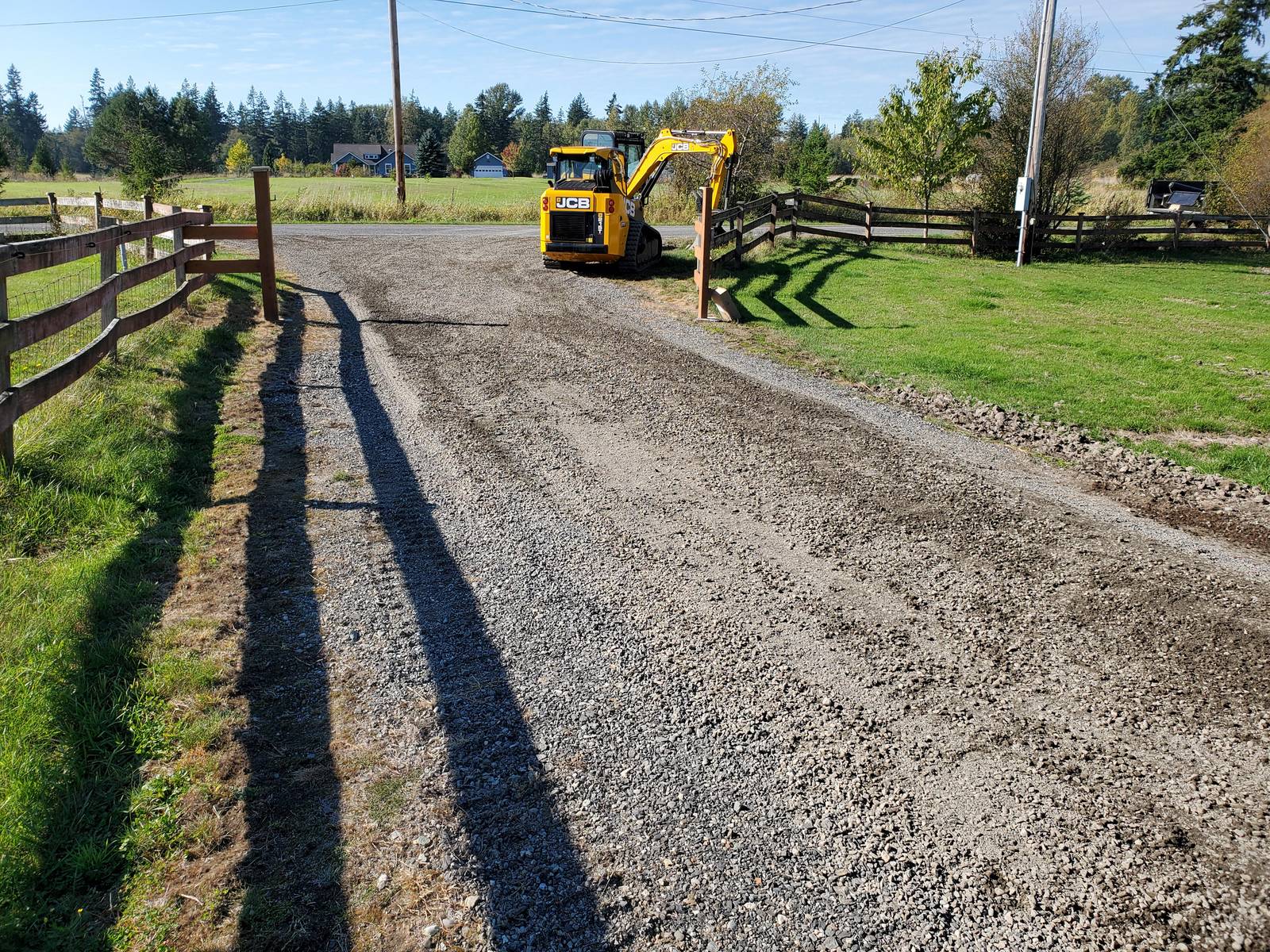Culvert Installment Made Easy: Step-by-Step Guide for Success
Installing culverts might feel like a simple job, but ensuring an effective result needs careful planning and execution. From choosing the suitable culvert size to incorporating proper water drainage actions, each step in the setup process plays a critical role in the functionality and long life of the culvert system. By complying with a systematic technique and taking notice of key information, the installment can continue efficiently, reducing potential concerns down the line. Remain tuned to reveal the essential actions and considerations that can make culvert installment a seamless and effective endeavor.
Picking the Right Culvert Size
Choosing the appropriate culvert dimension is crucial for ensuring effective water circulation and structural stability in culvert setup projects - Pad Construction. The size of the culvert directly influences the flow capability of water with the structure. A culvert that is as well tiny can lead to flooding and overflow, while one that is as well huge might cause decreased water speed, possibly creating sediment accumulation and blockages
To figure out the appropriate culvert size, elements such as the watershed area, optimal flow prices, and hydraulic performance demand to be thoroughly thought about. Calculations based upon these criteria help in selecting a size that can appropriately take care of the anticipated water quantity while decreasing the threat of clogs and architectural failing.
It is necessary to speak with engineering guidelines and standards to guarantee that the picked culvert size meets the project requirements and local policies (Pad Construction). By picking the right culvert size, project supervisors can maximize water circulation, stop potential concerns, and boost the total efficiency and longevity of the culvert setup
Preparing the Installation Site
Reliable culvert installment requires thorough preparation of the installment website to make sure ideal architectural support and capability. Prior to beginning the installation procedure, it is critical to clear the site of any particles, plants, or obstructions that could hamper the culvert's positioning. Making sure a level structure is crucial for the appropriate alignment and stability of the culvert. This might include grading the website to create a smooth, even surface area that can appropriately support the weight of the culvert and any anticipated loads. Additionally, correct compaction of the soil below the culvert is needed to avoid working out or shifting gradually.
Moreover, it is necessary to consider aspects such as soil composition, groundwater degrees, and environmental influences when preparing the installment website. Conducting a comprehensive website assessment can help identify any kind of possible challenges or risks that might influence the culvert's efficiency. By putting in the time to prepare the installation site correctly, you can aid guarantee a successful culvert setup that meets structural demands and makes certain lasting capability.
Placing the Culvert Properly

The grade at which the culvert is positioned is critical for preserving a proper slope for water circulation. A gradual incline helps prevent merging and advertises effective water drainage. Furthermore, the culvert must be oriented appropriately to make certain that the inlet and electrical outlet remain top article in the proper areas. This positioning is vital for the culvert to function efficiently in managing water flow.
Backfilling and Compacting the Soil
Proper backfilling and compaction of the soil around the culvert is important to make certain security click to investigate and stop prospective concerns in the future. When the culvert is appropriately put, the following essential action is to backfill the area around it with suitable product. The backfill material should be devoid of rocks, particles, and raw material to avoid damages to the culvert. It is suggested to utilize granular product such as sand or gravel for backfilling, as it offers great water drainage and compaction buildings.
After positioning the backfill product, it is very important to portable it in layers of consistent thickness. Utilizing a compactor or a mechanical tamper, portable the soil delicately to avoid harming the culvert. Compaction assists in decreasing the chances of negotiation and ensures uniform support around the culvert. It is important to compact the dirt evenly on all sides check out this site of the culvert to preserve its architectural honesty.
Correct backfilling and compaction not only supply security to the culvert yet likewise assist in stopping dirt disintegration and maintaining the longevity of the culvert system.
Making Certain Correct Water Drainage Integration
Incorporating effective drainage options plays a crucial role in the general performance and long life of culvert installments. Correct drain combination is necessary for managing water flow, protecting against disintegration, and guaranteeing the structural honesty of the culvert system. To achieve this, it is crucial to design an extensive drain plan that considers aspects such as the quantity of water expected, the topography of the area, and the kind of soil present.

Additionally, incorporating attributes like erosion control steps, such as riprap or vegetation, can better boost the efficiency of the water drainage system. By thoroughly planning and executing these water drainage solutions, culvert installations can work successfully and stand up to the test of time.
Verdict
Finally, correct culvert setup is essential for maintaining efficient drain systems. By selecting the appropriate culvert dimension, preparing the setup website, putting the culvert appropriately, backfilling and condensing the dirt, and ensuring proper drain integration, success can be accomplished. Adhering to these actions will help make sure the long life and efficiency of the culvert, ultimately adding to the general success of the water drainage system.
Comments on “Quality Road Construction for Long-Lasting Roads”